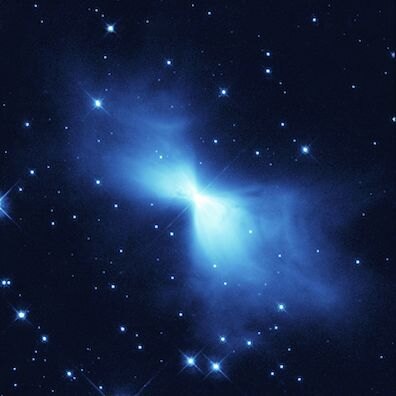Absolute zero
Absolute
zero
In Brief
Bloom is familiar with the scientific idea of an "absolute
zero" at which heat is completely absent, though his belief
that it is "thousands of degrees below freezing point" is
mistaken. The best understanding in 1904 was that the absolute
minimum temperature of matter was several hundred
degrees below the freezing point of water on the three scales
that Bloom thinks of: "Fahrenheit, Celsius or Réaumur." In
Celsius, a.k.a. Centigrade, it was (and still is) thought to
be approximately -273 degrees. Temperatures nearly that low
have been found in "interstellar space."
Read More
17th century natural philosophers, notably Anglo-Irish
chemist Robert Boyle, discussed the idea of a primum
frigidum or pure cold that must exist somewhere in the
world. 18th century physicists, notably Guillaume Amontons,
explored the idea experimentally and calculated that the lower
limit of temperatures would occur in the range of -240 to
-273° Celsius or -400 to −459° Fahrenheit, though prominent
astronomer Pierre-Simon
Laplace and chemist Antoine Lavoisier argued in a 1780
joint publication that the number was probably, as Bloom
thinks, "thousands of degrees below freezing." 19th
century scientific advances suggested that the
experimentalists' range was much more likely. In the 1870s,
80s, 90s, and early 1900s experimenters succeeded in
liquifying various gases (first air, then oxygen, hydrogen,
and helium) and measuring lower and lower temperatures (-319,
-360, -421, and -452°F, respectively). Theorists of the time
calculated that the absolute minimum would be about -459°F or
-273°C, and it remains in that range today. In 2014 Italian
scientists produced the lowest temperature yet measured:
-459.659°F or -273.144°C.
Although absolute zero is a theoretical limit never found in actual matter, scientists have neared it in the laboratory and found it approached in "interstellar space" as well. The coldest temperature yet measured in space is about -272°C or -457° Fahrenheit. In "Réaumur," the obsolete scale named for 18th century French scientist René Antoine Ferchault de Réaumur, it is approximately -217°.

1998 Hubble Space Telescope image of the bowtie-shaped Boomerang Nebula in the constellation Centaurus, the coldest known place in the universe with a temperature of -272° Celsius. Source: Wikimedia Commons.